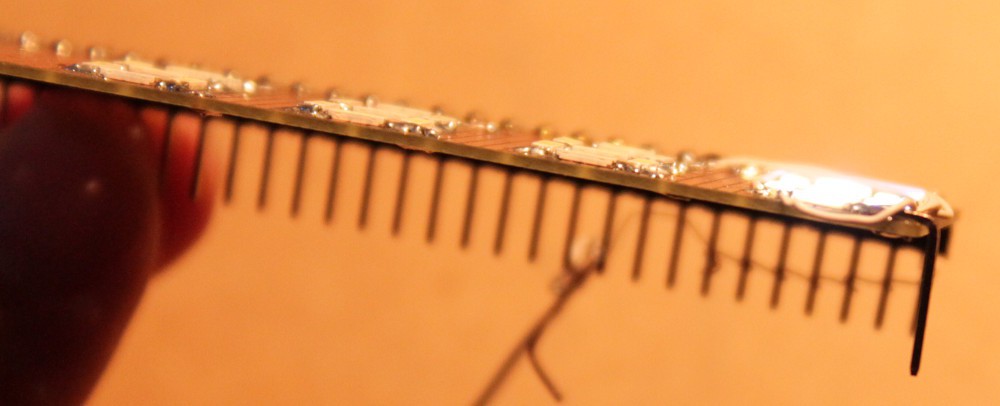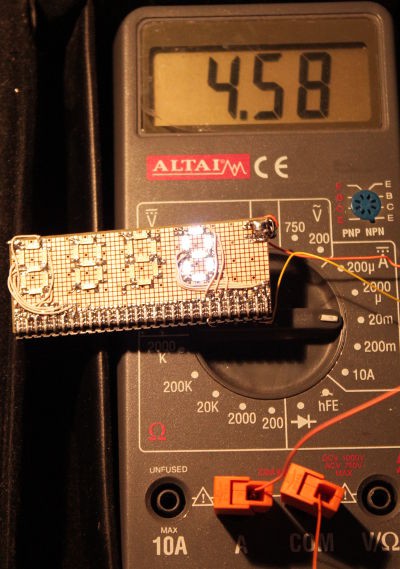Update: this is now a subproject, moved to #DYPLED
Before I wrote Another way to decode 7 segments displays, I had already soldered a little pre-prototype to test the voltages and visual results. Soldering the 28 LEDs was a bit delicate so I postponed the wiring... until now, I finally brought one digit to life (the others might come, who knows ?)
This results in a little module, sawed off from some SMT proto board that is quite thin (0.8mm incl. copper). The LEDs are thin too so the module is ... thin (about 1.5mm without the tiny wires). It almost looks and feels like an LCD glass :-)

So this part of my requirements is reached, the hex display will be modern and thin ;-)
The LEDs are in series with 100 Ohms to balance the luminosity. This might not be necessary but, as we'll see, maybe not...
The LEDs start to shine at 2.5V and are pretty luminous at 2.7V. A single 7-segments digit draws about 50mA at 3.3V and it's VERY bright, almost blinding.
If I implement the system described in the previous log, I'll have to "undervolt" the Flash. The AM29LV160DB is rated at 2.7-3.6V, so now I have to find a 2.7V regulator...
The LEDs are not rated for 2.7V, so they might vary in luminosity. The 100 Ohms resistors (0603) are kept to balance the brightness. Maybe a higher resistance (around 5K ?) will work better and allow 3.3V operation ?
I didn't plan the pinout correctly so the digits are not centered on the board. I'll have to make a new one that shares one pin with two segments, so I can prototype the proposed multiplexed system. Digital dimming will also be useful, I see :-)
Placing a sheet of paper is a bit easier for the eye but I have to experiment more. It's far from perfect but very encouraging :-)
Update:
I wired another digit with 1K resistors and the results look good, pretty luminous but not too much and there is some headroom for digital dimming.
A whole digit uses 4.5mA (full on), a couple will draw 9mA max, this is reasonable and will decrease with duty cycle and displayed values. The Flash's output drivers will drop the voltage a little, too, so I rounded 4.58 down to 4.5.
This is significantly better than the TIL311 :-)
 Yann Guidon / YGDES
Yann Guidon / YGDES


Discussions
Become a Hackaday.io Member
Create an account to leave a comment. Already have an account? Log In.
nice!
Are you sure? yes | no
I'd like to make a PICTIL-like module with this system :-)
Are you sure? yes | no
Done ;-) #DYPLED
Are you sure? yes | no